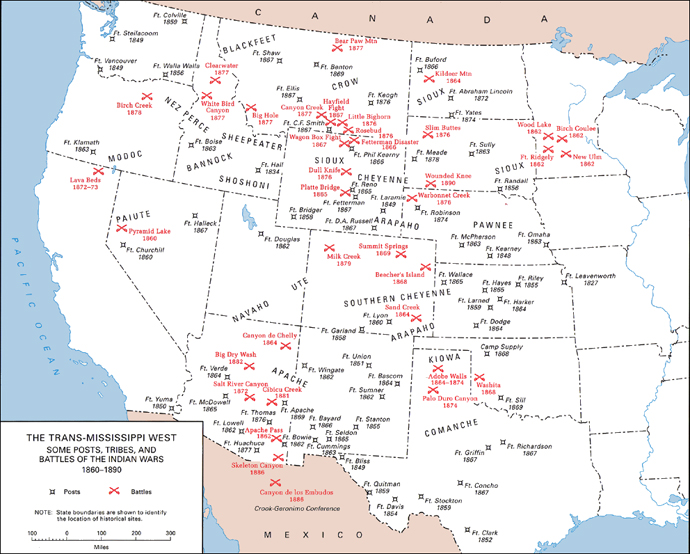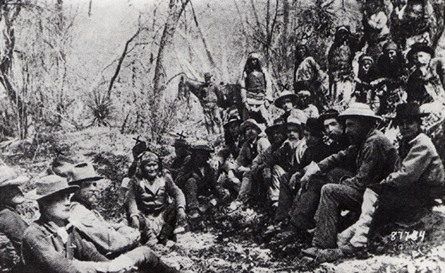|
|
5. How would you have settled the "Indian question" during the 1860s and 1870s? What means would have been available to you as an Army officer to change what happened to the Indians, and how would you use those means?
6. What was Fetterman’s big mistake? Custer’s?
R R
Hutton, Paul A. Phil Sheridan and His Army. Norman: University of
Oklahoma Press, 1999.
Larson, Robert W. Red Cloud: Warrior-Statesman of the Lakota
Sioux. Norman: University of Oklahoma Press, 1997.
Leckie, William H. The Buffalo Soldiers: A Narrative of the Negro
Cavalry
in the West. Norman: University of Oklahoma Press, 1967.
McDermott, John D. A Guide to the Indian Wars of the West. Lincoln:
University of Nebraska Press, 1998.
Rickey, Don. Forty Miles a Day on Beans and Hay: The Enlisted
Soldier Fighting the Indian Wars. Norman: University of Oklahoma
Press, 1963.
Sklenar, Larry. To Hell with Honor: Custer and the Little Bighorn.
Norman:
University of Oklahoma Press, 2000.
Tate, Michael L. The Frontier Army in the Settlement of the West.
Norman:
University of Oklahoma Press, 1999.
Utley, Robert M. Cavalier in Buckskin: George Armstrong Custer
and the Western Military Frontier. Norman: University of
Oklahoma Press, 2001.
———. Frontier Regulars: The United States Army and the Indian,
1866–1891. Lincoln: University of Nebraska Press, 1984.
Wooster, Robert. The Military and United States Indian Policy,
1865–1903. Lincoln: University of Nebraska Press, 1995.
Other Readings
Athearn, Robert G. Forts of the Upper Missouri. Englewood Cliffs,
N.J.: Prentice-Hall, 1967.
Dunlay, Thomas W. Wolves for the Blue Soldiers: Indian Scouts and
Auxiliaries
with the United States Army, 1860–1890. Lincoln:
University
of Nebraska Press, 1982.
Hampton, Bruce. Children of Grace: The Nez Perce War of 1877.
Lincoln:
University of Nebraska Press, 2002.
Prucha, Francis P. The Great Father: The United States Government
and the American Indians. Lincoln: University of Nebraska Press,
1995.
Reardon, Carol. Soldiers and Scholars: The U.S. Army and the Uses
of Military History, 1865–1920. Lawrence: University Press of
Kansas,
1990.
Smith, Thomas T. The U.S. Army and the Texas Frontier Economy,
1845–1900. College Station: Texas A&M University Press, 1999.
Utley, Robert M. The Lance and the Shield: The Life and Times of
Sitting Bull. New York: Ballantine Books, 1994. |
![]()
![]()





